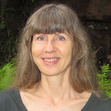How to build a map using a spreadsheet and JavaScript
This week I published a post on the Google Geo Developers Blog describing the building blocks of Tech Comm on a Map. That post assumes some knowledge of the Google Maps JavaScript API, so I’ve decided to write a top-up post with a little more detail.
Tech Comm on a Map puts technical communication titbits (societies, groups, businesses and conferences) onto an interactive map, together with the data and functionality provided by Google Maps. You can grab a copy of the code from GitHub. The most relevant bits are the HTML that defines the web page (index.html) and the JavaScript that defines and interacts with the map.
Loading the Google Maps JavaScript API
The first thing is to get hold of a map via the Google Maps JavaScript API. An HTML
Now all the functions of the Google Maps JavaScript API are available to the web page, and I can call them from my own JavaScript. With just a few lines of code I get an interactive Google map, loaded with geographical data and offering the default set of user functionality: zoom, pan, the choice of map view or satellite view, and Street View. To get started, see the Google Maps JavaScript API documentation.
You may have noticed the libraries parameter in the above
&libraries=places
I’ve added that parameter to request the Places library, which I use for the search box on the map as described later in this post.
Putting the map into the HTML page
The HTML file contains a element, with an ID, to define a place to put the map. In this case, I’ve called it “map-canvas”.
Now the JavaScript can refer to that when inserting the map onto the page. In essence, the JavaScript consists of two sections:
A function, here called “initializeMap()”, that sets up the map options and then adds the map to the page.
A listener that waits until the page has finished loading, then adds the map by calling the “initializeMap()” function.
Below is part of the “initializeMap()” function. It creates the map object, google.maps.Map, passing it the element that will contain the map, and a number of parameters that define the map centre, zoom factor, and other options:
function initializeMap() {
map = new google.maps.Map(document.getElementById("map-canvas"), {
center: {lat: 35.55, lng: 16.50},
zoom: DEFAULT_ZOOM,
panControl: false,
streetViewControl: true,
streetViewControlOptions: {
position: google.maps.ControlPosition.LEFT_BOTTOM
},
zoomControl: true,
zoomControlOptions: {
position: google.maps.ControlPosition.LEFT_BOTTOM
}
});
}
And this is the listener that calls the function to load the map:
google.maps.event.addDomListener(window, 'load', initializeMap);
Great, now we have a map, and I can start adding the bits and pieces that make up Tech Comm on a Map.
Visualising tech comm data on the map
Tech Comm on a Map contains information of the following types, all related to technical writing and technical communication:
Conferences (purple circles).
Societies (yellow circles), which includes societies and associations.
Groups (pink circles) for smaller groups and regular meet-ups of technical communicators, either as part of a larger society/association, or as an independent group.
Businesses (green circles) for commercial organisations specialising in tech comm, such as consultancies, recruiters, publishers, independent technical writers, and so on.
Other (blue circles), a grab bag to catch anything that doesn’t fit into the above categories.
The data is held in a Google Docs spreadsheet. Any changes we make in the spreadsheet are immediately reflected on the map. For details on setting up such a spreadsheet, and pulling the information into the map, see my post on the Google Geo Developers Blog.
The Place Autocomplete search box
The last piece of the puzzle is to let users search for a specific location on the map, so that they can zoom in and see the events in that location. The location search box on the map is provided by the Place Autocomplete widget from the Google Places API.
The HTML defines an input field for the search box:
The JavaScript adds the search box to the page, and creates a listener to react when the user starts typing in the search box:
var input = /** @type {HTMLInputElement} */(
document.getElementById('place-search'));
var types = document.getElementById('type-selector');
var branding = document.getElementById('branding');
map.controls[google.maps.ControlPosition.TOP_LEFT].push(branding);
map.controls[google.maps.ControlPosition.LEFT_TOP].push(types);
map.controls[google.maps.ControlPosition.TOP_LEFT].push(input);
var autocomplete = new google.maps.places.Autocomplete(input);
// When the user searches for & selects a place, zoom in & add a marker.
var searchMarker = new google.maps.Marker({
map: map,
visible: false,
});
autocomplete.addListener('place_changed', function() {
searchMarker.setVisible(false);
var place = autocomplete.getPlace();
if (!place.geometry) {
return;
}
// If the place has a geometry, then show it on the map.
if (place.geometry.viewport) {
map.fitBounds(place.geometry.viewport);
} else {
map.setCenter(place.geometry.location);
map.setZoom(AUTO_ZOOM);
}
searchMarker.setIcon(/** @type {google.maps.Icon} */({
url: place.icon,
size: new google.maps.Size(71, 71),
origin: new google.maps.Point(0, 0),
anchor: new google.maps.Point(17, 34),
scaledSize: new google.maps.Size(35, 35)
}));
searchMarker.setPosition(place.geometry.location);
searchMarker.setVisible(true);
});
What’s next?
Thanks to everyone who has contributed to this project. We’ll continue adding data items to the spreadsheet. We technical communicators are putting ourselves on the map!
As far as the code is concerned, there are already a few ideas for new features:
Add marker clustering, so that it’s easier to read the map when there’s a large number of items in a small area.
Make it possible to share a link to a particular item on the map, for example by creating and storing a hash fragment in the URL.
Add a data type for training/courses.
Would you like to contribute? The code is on GitHub.





